"In Stalingrad, humanity saw the dawn of victory over Fascism"
Russian general Chuikov.
“Animals flee this hell; the hardest stones cannot bear it for long; only men endure,” wrote a German soldier, summing up his experience of the battle.
Stalingrad wasn’t just a battle; it ranks among the greatest episodes of human history. The scale of fighting was almost Homeric. There was bravery, there was brutality and there was cannibalism.
Courage, toughness and weapons were peripheral factors in the Battle of Stalingrad. It was the tactical superiority of the Russian soldier in a range of environments that was the key to the Russian victory.
http://indrus.in/blogs/2013/02/06/stalingrad_what_happened_inside_the_cauldron_22125.html
However, the victory at Stalingrad was not simply a matter of enormous human sacrifice. It not only required winning the production battle with Nazi Germany, the Red Army also had to master the tactics of urban warfare.
--------------------------------
In Britain and the US, the Soviet contribution to Hitler’s defeat has long been played down. Central in this lack of recognition was not only the sacrifice made by the people of the Soviet Union, but also how they defied the misleadership and repression of Stalin and his machine.
-----------------------------
Chuikov’s forces were left to face the vastly bigger German forces virtually on their own. Meanwhile Zhukov and Vasilevsky were preparing a wider encirclement of the Paulus’ army, while Chuikov’s forces acted as “bait”.
When it comes to Stalingrad, one generally wants to see the images of German soldiers. The reason is obvious. They lost. Most died in battle and in the ensuing captivity. We get a sense of sadness, of ghoulish fascination.
Below are some images of Soviet soldiers at Stalingrad. We have avoided the more well known pictures. We have also eschewed the " Soviet-propaganda-grinning-confident-soldiers" images.
What the Russians did at Stalingrad deserves our deepest admiration. Withstanding the full might of the Wehrmacht and then destroying the German Sixth Army was no mean achievement. This is not so well known in the English speaking world because the Russians were never good at trumpeting themselves as say the Americans and British are.
Any serious student of history knows that Chuikov, Rodimtsev, Zhukov and Khruschev are names that rang the death knell of Nazi Germany. Funnily more people in the world have heard of the names of Eisenhower, Montgomery, Bradley then the names mentioned above.
--------------------------
At this desperate hour, they could hear the Germans shout from their trenches: “Russ, skoro bul-bul u Volga.” (“Russians, you'll soon be blowing bubbles in the Volga.”).
People of Stalingrad flee after the first German aerial bombardments. On the left is a Russian anti-aircraft gun.
This is what German Field Marshal Kleist had to say of the Russians....
A German sniper apprehended by Soviet soldiers. Stalingrad. 1942. Looks like the poor guy has been roughly handled. Stalingrad was a tough place to be in in late 1942.
VIDEO: STALINGRAD PART 1
“In order to defeat the Russian soldier, you must kill him. Then bayonet him. And then shoot the bastard – and only then you can be sure of your victory.” When Frederick the Great made that statement in the latter half of the 18th century, he was hardly influenced by Bolshevik propaganda. As one of the foremost generals of his time, the Prussian ruler’s assessment that the Russian soldier was the toughest was based on his battlefield observations of European armies and individual soldiers.

Russian soldiers fire the 50 mm mortars at German positions. September-October 1942.
It was Stalingrad that reinforced the image of the tough Russian. General Vasilii Chuikov, whose 62nd Army was tasked with the defence of Stalingrad, writes in his memoirs, The Story of the Battle for Stalingrad, about the tough new guardsmen the Russians introduced into the battlefield: “These were really guardsmen. All of them were young and tall, and healthy, many of them in paratroop uniform, with knives and daggers tucked into their belts. They went in for bayonet charges, and would throw a dead German over their shoulder like a sack of straw. For house-to-house fighting, there was no one quite like them. They would attack in small groups, and, breaking into houses and cellars, they would use their knives and daggers.”
VIDEO: STALINGRAD: PART 2

A Russian doctor operates in Stalingrad
The stiff resistance offered by Russian soldiers, despite the complete lack of preparedness of their forward units in 1941-42, had surprised the Germans. In hopelessly outnumbered and outgunned battles – at the fortress of Brest-Litovsk on the western frontier, in Sevastopol, Odessa and Tula – the Soviets had displayed astonishing resistance that took a heavy toll on the German Army. “In retrospect, it is difficult to imagine Stalingrad as anything but a death trap for the Germans,” writes David Stone, professor of military history, Kansas State University, in the Journal of Slavic Studies.

The braves nurses carry the wounded from the factory shop at Stalingrad.
As the Russians fought off the Germans, the 62nd Army’s command post, which was located near some oil installations, were set ablaze by German bombers. The burning oil poured across Chuikov’s trenches.
“At first we almost lost our heads,” Chuikov writes. “What were we to do? Then my chief of staff, General Krylov, gave the order: “Sit tight. Stay in the undamaged dugouts and keep up radio communications with the troops.”
The fire went on for several days, with nobody to douse it as all of Chuikov’s troops, including his engineers, were fighting the Germans. In the remaining dugouts, often under enemy fire, and with a massive blaze around them, Chuikov and his commanders somehow clung on to their bridgeheads. “We did not sleep for several days and nights,” he writes.

Stalingrad after the battle in 1943. (Click to enlarge image)
Soviet soldiers of the 308th Rifle division rush forward in the Barrikady factory. They are armed with the PPSh machine-gun which was ideal for close combat but inaccurate over 50 metres.
“The 14th of October marked the beginning of a battle unequalled in its cruelty and ferocity throughout the whole of the Stalingrad fighting,” writes Chuikov. “Three infantry and two panzer divisions were hurled against us along a five-km. front... There were three thousand German air sorties that day. They bombed and stormed our troops without a moment's respite. The German guns and mortars showered on us shells and bombs from morning till night. It was a sunny day, but owing to the smoke and soot, visibility was reduced to 100 yards. Our dugouts were shaking and crumbling up like a house of cards.
“By October 30 we began to feel that we were winning the battle. It was clear that Paulus was no longer able to repeat his October 14 offensive which brought us to the brink of catastrophe.
But it was not over yet. On November 11, the Germans launched their last major attack on the defenders of Stalingrad. Both sides knew it was now or never. In Chuikov’s words, “We fought for every brick and stone, for every yard of the Stalingrad earth.”

Russian soldiers at the Red October factory. 1942 (Click to enlarge image)
September 1942. The Soviet 284th Rifle Division after landing on the shores of Volga in Stalingrad. Famous sniper Vasily Zaitsev belonged to this division.
A Soviet storm group move cautiously amongst the ruins of Stalingrad
The Russians soon adapted brilliantly to the rigours of urban warfare. “Contrary to a picture drawn from German sources, Stalingrad shows the Soviet Army as analytical and innovative, understanding technology and employing resources effectively, and relying heavily on the initiative and flexibility of individual soldiers and junior officers,” writes Stone.
“The Soviets proved to be highly skilled at urban warfare. Given that fighting in cities requires great initiative and improvisation on the part of individual soldiers and junior officers, the Soviet victory further undermines the outdated conventional wisdom of stolid and faceless Russian soldiers.”
For instance, the Russian defenders faced the greatest threat from the Luftwaffe. They also observed that the Germans were not good at precision bombing. Chuikov, therefore, devised a tactic whereby the gap between the Germans and the Russians never exceeded “the distance of a hand-grenade throw”. This kept the Russian frontlines more or less immune from air attack.

Soviet officers monitor the enemy from the artillery command post of the 138th Infantry Division.
Two other factors worked very well for the Russians – artillery and snipers. The powerful fire of the guns and katyusha multiple rocket launchers from the east bank of the Volga caused havoc among German troop concentrations. In one instance, an entire German battalion was wiped out by one katyusha salvo.
Stalingrad was also the origin of the legend of sniper Vasili Zaitsev. A soldier with the Russian 248th Division from Siberia, he was so skilful a shot that in one 10-day period killed 40 Germans, each with a single shot.
Zaitsev was credited with 225 verified kills, 11 of them snipers. The snipers became a fearsome force within the Russian Army, and the soldiers he trained alone notched up 6000 confirmed kills, planting the seeds of panic within the German Army.

August 1942. Red Army ferries men and supplies across the river Volga which were continuously hammered by the Luftwaffe. (Click to enlarge image)
German war memoirs often blame the Wehrmacht’s difficulties on the “Russian winter”. Many Western historians have lapped up such lies perhaps in a bid to take some off the shine from the Russian victory.
In fact, the Germans dispatches if studied impartially would shed some light on the role played by winter in the outcome of the war. For instance, General Heinz Guderian has gone on record, saying that in many sectors “there was no possibility of using motorised troops until the frost set in”.
Alexander Werth says in Russia at War – 1941-45: “Guderian’s argument that rain and mud interfered with the success of the first German offensive against Moscow seems futile, since it affected the Russians as much as the Germans; besides, Guderian himself admits it was the defence put up by the Russians, and not the mud that stopped him from capturing Tula, this key position on the way to Moscow.”

Red Army soldiers of the 62nd Army in huts on the bank of the River Volga. 1942
In the larger war theatre, the defenders of Stalingrad were performing a role that the Russian brass wanted them to do – they were occupying German attention, while the buildup of troops on the German Sixth Army’s flanks continued. Unknown to the Germans, a new army group called the Southwest Front under Lieutenant General Nikolai Vatutin was established. As Chuikov said, “Time is blood.”
The Russian counterattack when it came broke the exhausted Germans’ back. American journalist Henry Shapiro gave a vivid account of that attack: “The steppe was a fantastic sight; it was full of dead horses, while some horses were only half dead, standing on three legs and shaking the broken one. It was pathetic, 10,000 horses had been killed in the Russian breakthrough. The whole steppe was strewn with these dead horses, and wrecked guns and tanks and trucks and half-tracks, and no end of Romanian and German corpses.”
Residents of Stalingrad cooking amongst the ruins of what once were their homes. Handiwork of the Luftwaffe. Richthofen and the German planners did not forsee that by bombing Stalingrad to bits in August and September 1942 they were digging the grave of the German Sixth Army.
Russian women pilots with their light U-2 plane in the background. These planes made of wood carried 6 bombs of 50 kg each. The women pilots would fly over German positions at night and drop the bombs. The light plane hardly made any noise. The Germans called these women pilots "night witches." Many got the Hero of the Soviet Union after the war
Stalin’s leadership during the war was one of the most enduring myths within the former Soviet Union. Even in today’s Russia, those ready to criticise Stalin’s purges still find it difficult to accept that his wartime role was so disastrous. Chief amongst the myths was that Stalingrad could never have fallen. But the truth was that things had got so bad that, in the words of one veteran, Gamlet Dallakian, “there was virtually nobody to defend the city”. But, he said, “it was forbidden to admit that Stalingrad could have fallen – I would have been arrested. … During the defensive period of the battle, the idea that our soldiers never lost faith in an eventual victory was a propaganda myth.”
Soviet soldiers firing anti-aircraft gun at German aircraft at Stalingrad. 1942
As the main landing area near the center of Stalingrad came under increasing pressure an alternate landing site on the Zaitsevski island was built. Here Russians soldiers build a pontoon bridge connecting the island with eastern Stalingrad under German fire.
THE VITAL ROLE OF CHUIKOV
Things changed dramatically under Chuikov’s leadership when he introduced a unique spirit of equality and unity within the army.
Beevor describes Chuikov mainly as “ruthless” and holds him responsible for the execution of thousands of Soviet soldiers at Stalingrad. Historian Paul Overy and Chuikov’s own soldiers disagree and newly released NKVD (Stalin’s secret police) documents have borne them out. The execution rate for cowardice was far lower within the 62nd Army than for the Stalingrad Front as a whole.
Chuikov made an acute study of what gave his enemies superiority in order to find ways of taking them by surprise. He continued to seek new ways of fighting, running military exercises for his men which were significant through their novelty. In the words of his tank commander at Stalingrad:
“He was always seeking new approaches… demanding that we get really, really close to the firing line, and immediately penetrate the enemy trenches, not letting them recover from the artillery shelling. It was a novelty at the time, and not everyone approved of it. But how wonderfully it worked at Stalingrad.”
Chuikov’s distrust of blueprints, his flexibility and fresh approach psychologically gave the defenders “reason to hope again”. Chuikov made up for his army’s weaknesses by encouraging a spirit of combat initiative, introducing new units such as small storm groups. While being tough on discipline, he also trusted his soldiers, thereby again transforming morale. He led from the front, breaking regulations by having his HQ extremely close to the enemy’s lines.
Without these skills and qualities and those of other leaders like Alexander Rodimtsev, the 36-year-old commander of the 13th Guards Rifle Division, the desperate odds faced by the defenders between 13 and 14 September 1942 in the fight for the Central Railway Station and control of Mamayev Kurgan would have meant certain defeat. Indeed, Rodimtsev’s guards took almost 100% casualties crossing the Volga to come to the rescue of the 62nd Army.
When the Germans took control of the famous Mamayev Kurgan hill, which was seen as the key to the city, the 62nd Army only had enough ammunition for one day’s fighting in the city, while the 6th Army under General Friedrich Paulus expended 23 million rifle rounds, 750,000 mortar shells, 685,000 tank and infantry artillery shells, plus 178,000 hand grenades.
That day, the NKVD, who had been appointed by headquarters to be in charge both as soldiers and police, were unable to withstand the German offensive. When Chuikov arrived he challenged General Yeremenko’s (who led the counter-attack on Stalingrad) orders, Jones writes, “insisting that the NKVD forces be subordinated to his own authority”. The NKVD colonel Sarayev backed down. The NKDV’s “blocking detachments” responsible for preventing retreat, sometimes by shooting their own side, were now under the divisional commander’s authority.
Chuikov’s original idea of a “storm troop group” took hold amongst the soldiers and became increasingly popular. It relied on taking the enemy by surprise by preying on the German’s dislike of night fighting and close combat. Through short bursts of concentrated hand-to-hand fighting at which Stalingrad’s defenders became increasingly skilled, fighting for the city on a house-to-house – or rather ruin-to-ruin – basis. Chuikov, Rodimstev and defenders like Jacob Pavlov (of the famous Pavlov house), Georgi Potanksi, Anton Dragan, and a Captain Naumov developed these new ways of fighting under conditions of absolute desperation. They made key positions like Pavlov’s house into part of an integrated defence system using artillery spotters and supporting artillery fire. In this decentralised network of fighters, rank-and-file soldiers began to feel their own strength and influence in changing the course of history. Chuikov had coined a new slogan – “Every man a fortress”.
http://www.aworldtowin.net/reviews/Stalingrad.html
Soviet soldiers atop a German tank displaying the home made boots (made from paper) used by desperate German soldiers. Later stages of the battle when the encircled Germans were in dire straits
Street fighting in Stalingrad (Click to enlarge image)
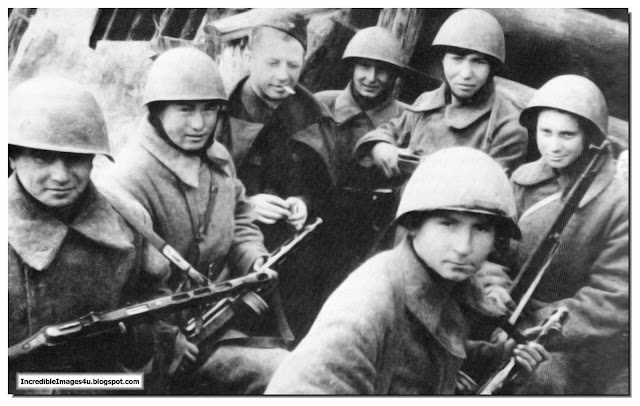 |
The tough hero. Alexander Rodimtsev. With his tough Siberian men from the 13th Guards Division (Click to enlarge image)
WHO WAS ALEXANDER RODIMTSEV? |
During the course of the Second World War, he is best remembered for his role in the Battle of Stalingrad, where he brilliantly commanded the 13th Guards Rifle Division which earned him his second order of Hero of the Soviet Union. The division was charged to hold the Germans between Mamaev Kurgan and Tsaritsa Gorge, which his outnumbered and outgunned force successfully did. Rodimtsev was vastly popular with his troops and was well known for his bravery.
Soviet machine-gunners change position. 1942 (Click to enlarge image)
Here from a Russian account is how the fighting went: "At a narrow window in the semi-basement we set up the heavy machine gun, with our emergency supply of ammunition—the last belt of cartridges I had decided to use at the most critical moment. Two groups, six in each, went up to the third floor and the attic. Their job was to break down walls and to prepare lumps of stone and beams to throw at the Germans. A place for the seriously wounded was set aside in the basement...."
After five days the basement held twenty-eight seriously wounded men. Only twelve men were still able to fight. The only food was a few pounds of scorched grain. There was no water.
The German attacks stopped, but they kept up the fire from their heavy-caliber machine guns.
"The Germans attacked again. I ran upstairs with my men and could see their thin, blackened and strained faces, the bandages on their hands."
The nurse with the battalion, Lyuba Nestertenko, was dying with blood flowing from a wound in the chest. She tried to help bind up a man's wound, but she failed.
The German attack was beaten off. In the silence that gathered they could hear the fighting on Mamayev Hill and in the factory area.
"How could we help the men defending the city?" the commander of the battalion asked himself. "How could we divert from over there even a part of the enemy forces, which had stopped attacking our building?"
They decided to infuriate the Germans by raising a red flag over the building in defiance. But they had no red material. One soldier who was severely wounded took off his bloody undershirt, wiped his wound with it to get more blood, and handed it to the officer.
The Germans shouted through a megaphone: "Russians, surrender. You'll die just the same."
The red flag went up over the building.
"Bark, you dogs. We've still got a long time to live," shouted a Russian soldier.

Russian soldiers firing 120 mm mortars on German positions. 1942
 |
| Soviet soldiers walking towards Stalingrad. It is September 1942 and the Volga is not frozen yet |

A German Messerschmitt pilot force landed in Stalingrad due to engine failure was arrested by the Russians. September 8, 1942.
(Click to enlarge image)
Russian citizens leave their homes as the German bombs fall on Stalingrad
Soviet soldiers in a defensive position as the German assault begins on the outskirts of Stalingrad
A Stuka has just hit a Soviet boat crossing over to Stalingrad. Russian soldiers rush to help survivors swimming ashore. A pall of smoke hangs over the Volga.
A Soviet Storm Group climbs the stairs apprehensively in a building near the Red October factory. The Russians had to worry not only about the Germans but the poor state of the buildings rocked by bombs
Soviet reinforcements cross the River Volga into Stalingrad. September, 1942.

The Red Army put up hedgehog defenses in Stalingrad. August 1942
A Soviet soldier enjoys his much welcome daily quota of 100 gms of vodka from a German mess tin as his comrade looks on enviously
The Red Army attacks and captures the village of Spartanovka on the outskirts of Stalingrad. January 1, 1943. The Germans were so weak and exhausted that they did not have the strength to dig graves in the hard frozen ground for their dead.
Soviet soldiers of the 39th Guards rifle division at the "Red October" factory. January 1943.
Soviet soldiers in a German Ju-52 transport plane which crash landed in Stalingrad. November 1942
The deadly Soviet Katyusha rockets firing on German positions at night. The German soldiers hated them.
As the Sixth Army fought on in Stalingrad because of Hitler's fixation, the Soviet army as part of Operation Uranus starting encircling it. The Soviet tanks and army moved at night to avoid the prying eyes of the Luftwaffe.
Russian soldiers from the Don Front chasing retreating German soldiers into Stalingrad, pass by some dead Germans. Both sides treated the injured or surrendered with utmost brutality
Victory parade after the liberation of Stalingrad. 1943
The commander of the 13th Guards Division, which participated in the defense of Stalingrad, a Hero of the Soviet Union, Major General Rodimtsev near the staff dugout. Stalingrad, September 1942.
German planes at Stalingrad captured by the Russians. On the right the large aircraft - transport glider DFS 230, left - dive bomber Junkers Ju-87
Chuikov examines the rifle of Vasily Zaitsev as the famous Russian sniper looks on. January 1943.
RELATED
---------------------------------------------
Suggested Reading
STALINGRAD: How the Red Army Triumphed by MICHAEL JONES
Jones in his book gives an unbiased account of how the Russians defeated the Germans at Stalingrad in 1942-43.
Michael K. Jones's new history of Stalingrad offers a radical reinterpretation of the most famous battle of the WW2. Combining eyewitness testimony of Red Army fighters with fresh archive material, the book gives a dramatic insight into the thinking of the Russian command and the mood of the ordinary soldiers. He focuses on the story of the Russian 62nd Army, which began the campaign in utter demoralization, yet turned the tables on the powerful German 6th Army. He explains the Red Army's extraordinary performance using battle psychology, emphasizing the vital role of leadership, morale and motivation in a triumph that turned the course of the war.
While most would look to Beevor's "Stalingrad: The Fateful Siege" as a guide to the battle, I would tell them to not waste their time. Jones, constantly, proves how Beevor has misinterpreted the history of the battle in one way or another or rather propagated already established myths.
------------------------------------
STALINGRAD: Victory on the Volga (Images of War) By Nik Cornish
Many rare pictures from the battle of Stalingrad
I have the kindle edition and it is a very good, concise history of the battle with some very good pictures to accompany the text. If you had to only own one book on Stalingrad, this one is to brief, but for what it is, a book that primarily focused on images from Stalingrad, it is an excellent book.
A Reader





































































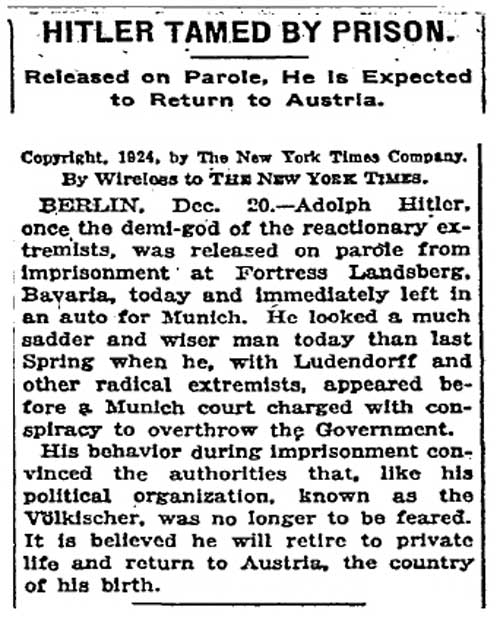
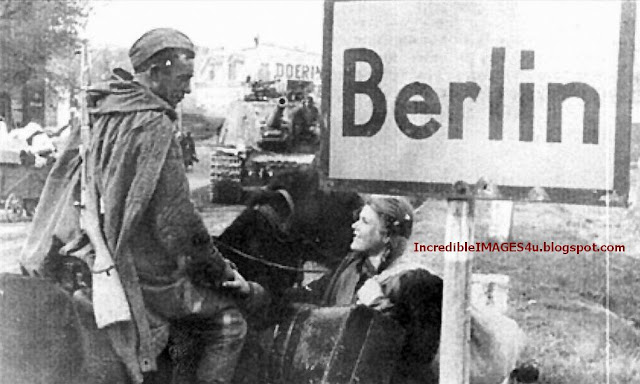






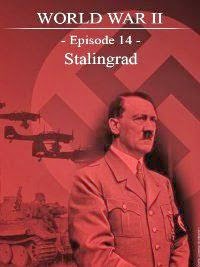
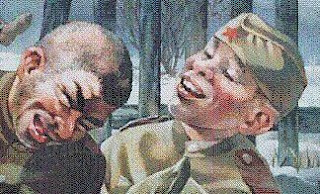
3 Comments:
I think you are right in your summation of the story on the battle of Stalingrad.The Russian soldiers were a real force to contend with.Once the Germans flattened the city it a death trap for them, and the fact the they completely under estimated the resolve of the Soviets ability to fight was their undoing. This is an excellent summation of the battle four Stalingrad, Americans don't realize that the without the Soviets wee could never have won the war. MARK WISE
The "Stalingrad after the battle" photo shows (from the south) the terminal building of Railroad Station No. 1. The fountain with the Barmalay sculpture can be seen at right in the distance.
The photo captioned "August 1942. Red Army ferries men and supplies....." shows the Soviet State Bank building in downtown Stalingrad.
Post a Comment